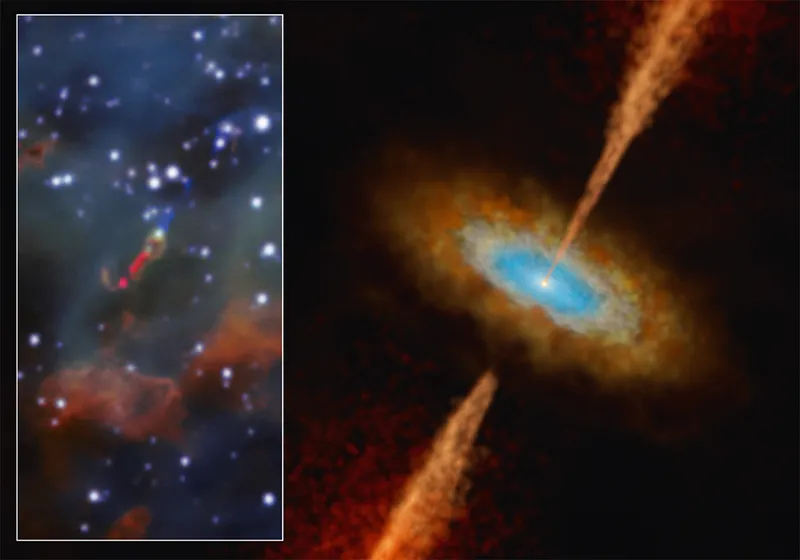A planet-forming disc has been spotted around a star in another galaxy for the first time ever.
The star, HH1177, is 160,000 lightyears away in the Large Magellanic Cloud, one of our own Galaxy’s satellites.
It first came to astronomers’ attention when they observed the region with ESO’s Very Large Telescope in Chile.
"We discovered a jet being launched from this young massive star," says Anna McLeod from Durham University in the UK, who led the study.
"Its presence is a signpost for ongoing disc accretion."

How to spot a planetary disc around a star
Such discs form from the gas and dust surrounding growing stars. As this matter can’t fall onto the star directly, it instead flattens out to form a rotating disc.
Parts of the disc closer to the star rotate faster than those further out.
If astronomers spot this unique velocity pattern around a star, they know they’ve found an accretion disc.
Fortunately, a trick of physics shifts light from objects moving towards an observer into bluer colours, while that moving away becomes redder.
The faster the object is moving, the bigger the shift.
Using the Atacama Large Millimeter/Submillimeter Array (ALMA), McLeod’s team was able to measure the velocity of the disc and found it looked exactly like an accretion disc.

Evidence for planets in another galaxy?
We know from similar discs seen here in our Milky Way that they often go on to form planetary systems.
However, those around large stars such as HH1177 are usually surrounded by clouds of obscuring dust.
But material within the Large Magellanic Cloud is fundamentally different to that of the Milky Way, leading to a lower dust density around H1177, allowing astronomers to see the growing system.
"We know discs are vital to forming stars and planets in our Galaxy, and here, for the first time, we’re seeing direct evidence for this in another galaxy," says McLeod.
"Being able to study how stars form at such incredible distances and in a different galaxy is very exciting."
Key takeaways

The relative lack of heavy metals in the Large Magellanic Cloud makes the presence of such a large disc a surprise.
Though the data is fuzzy, in our own Galaxy planets are more common in stellar systems formed from gas with more carbon, oxygen and so on – the ingredients for planet formation.
So we might have expected the LMC to be relatively devoid of planets, but there they are.
Of course this is just one system. But it bolsters the idea that exoplanets are common not only in the Milky Way but throughout the cosmos.
One day, a more sensitive telescope might let us study planets in our Galaxy’s companions as a matter of course, and even help us understand the details of planet formation.

